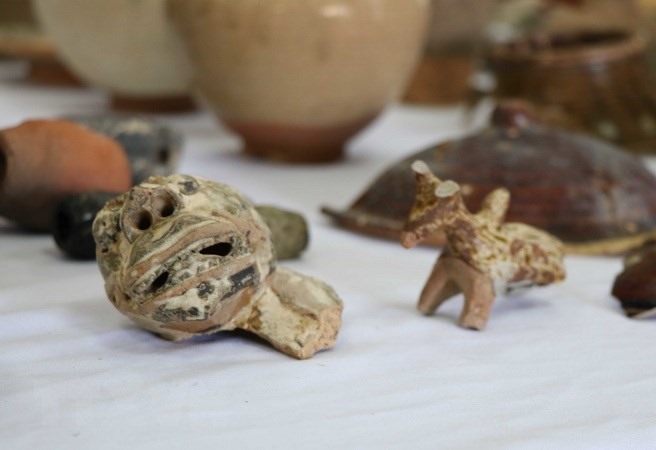Viet Nam News
BINH DINH — Thousands of ceramic objects were unearthed at an excavation site in the central province of Binh Dinh, scientists confirmed at a workshop held in the province on Wednesday.
Researcher Pham Van Toi, former vice rector of the Institute of Imperial Citadel Studies, said in an area of 100sq.m. at Cay Me Hill in Nhon My Commune, An Nhon Town, the excavation team discovered four pottery kilns of the Cham ethnic minority group.
“More than 23,000 ceramic and pottery utensils, building materials, statues and working tools were found at the site,” he said.
According to scientists, the area used to be a ceramic-producing centre of the Chams during the 14-15th century.
Toi suggests further excavation at the site to understand more about the centre and its role in the then society.
The excavation was carried out by Binh Dinh General Musuem and the institute.
At the same workshop, scientists also reported an excavation of the Cha Ray Towers Complex, a monument built by the Cham people on a hill in An Nhon Town.
 |
| Thousands of ceremic wares have been found at four ancient pottery kilns of the Cham ethnic minority group in Binh Dinh Province. |
Toi said the site used to host a complex of three towers. Over time, the complex had been damaged and abandoned, and the local people took bricks from the site to build houses, damaging the site more severely. Today, the site is a massive pile of damaged bricks.
Toi said the main tower was located at the peak of the hill, with the foundation measuring 20m in length. Two smaller towers are located to the east of the main tower. They have a foundation measuring 10m in length.
The complex was built in Cham style in the 12-13th century, the same era in which other famous Cham towers in the province were built, including the Canh Tien Tower, Banh It Tower, Doi Tower and Duong Long Tower.
More than 10,400 objects, mostly tiles, bricks and decorative patterns made of baked clay, were discovered at the site.
“Results of the excavation at the complex will be used for further research at the site and will serve as the foundation for general cultural research on Champa culture in Binh Dinh,” Toi said.
The Hindu kingdom of Champa emerged around present-day Da Nang in the late 2nd century AD. Like Funan, it adopted Sanskrit as a sacred language and borrowed heavily from Indian art and culture. By the 8th century, Champa had expanded southwards to include what is now Nha Trang City and Phan Rang City. For centuries, the Chams occupied the vast and prosperous Kingdom of Champa. The empire collapsed in 1471. — VNS